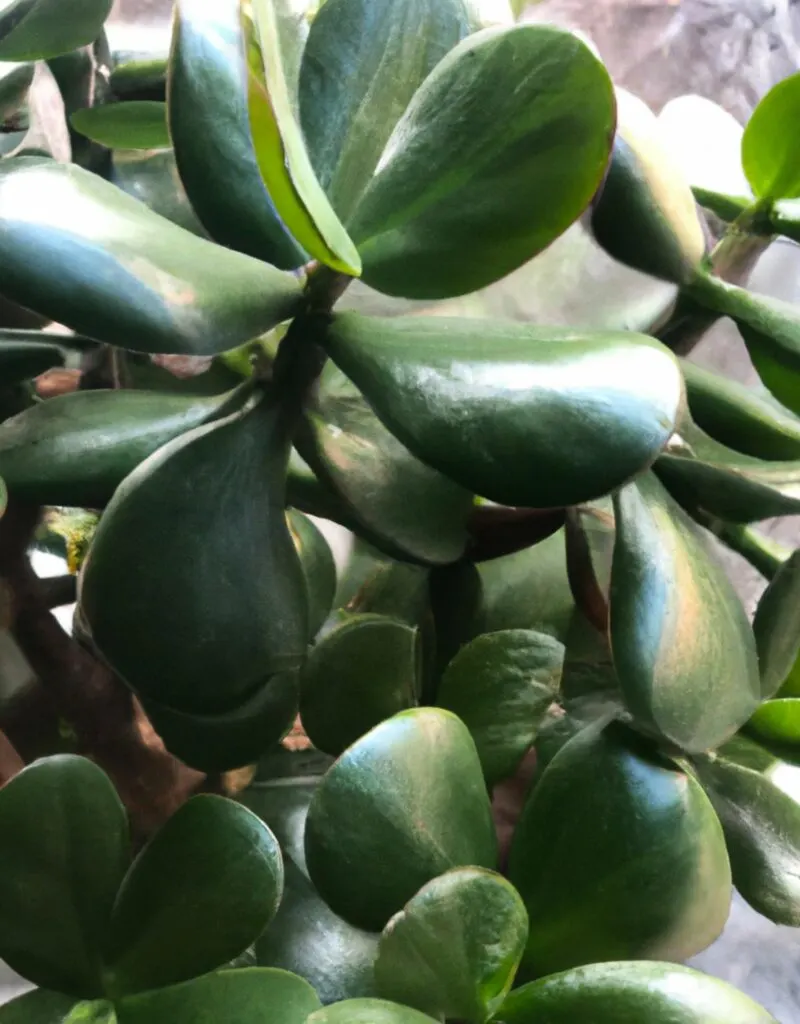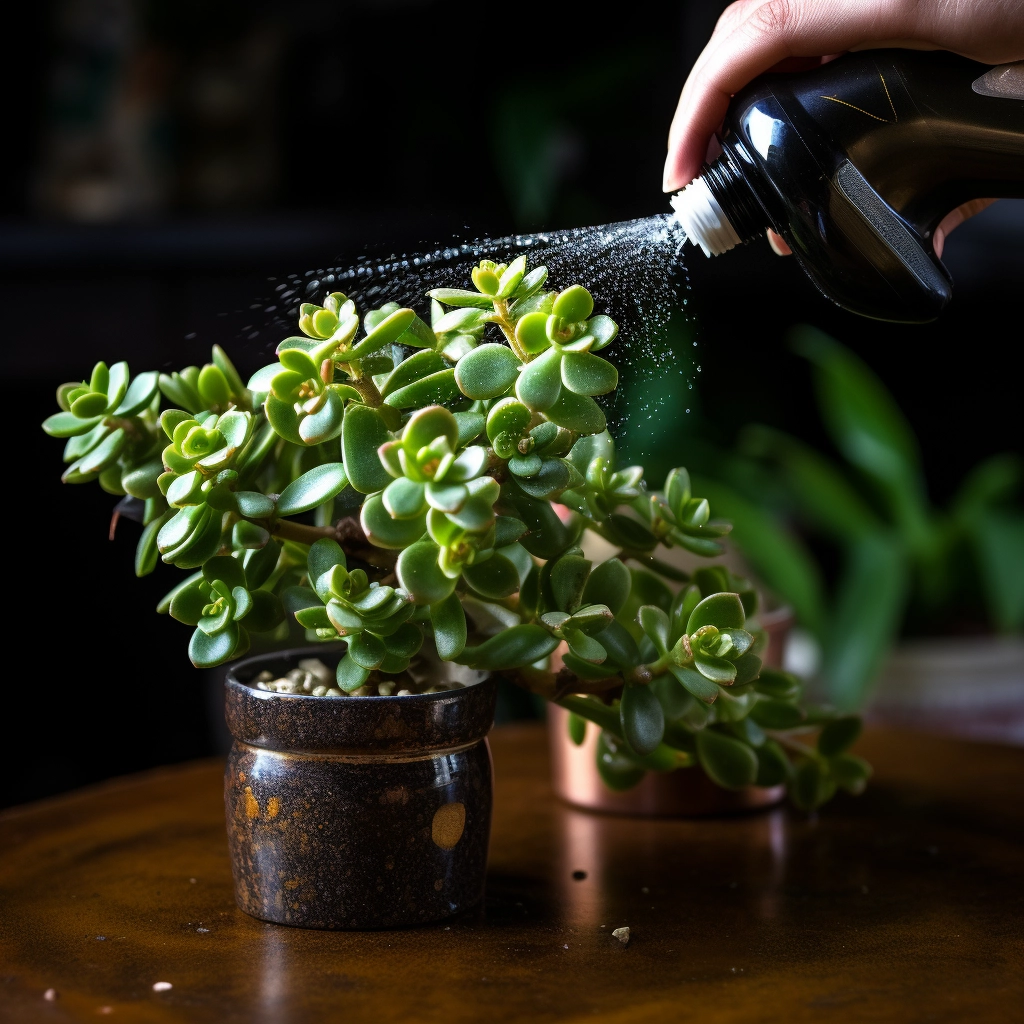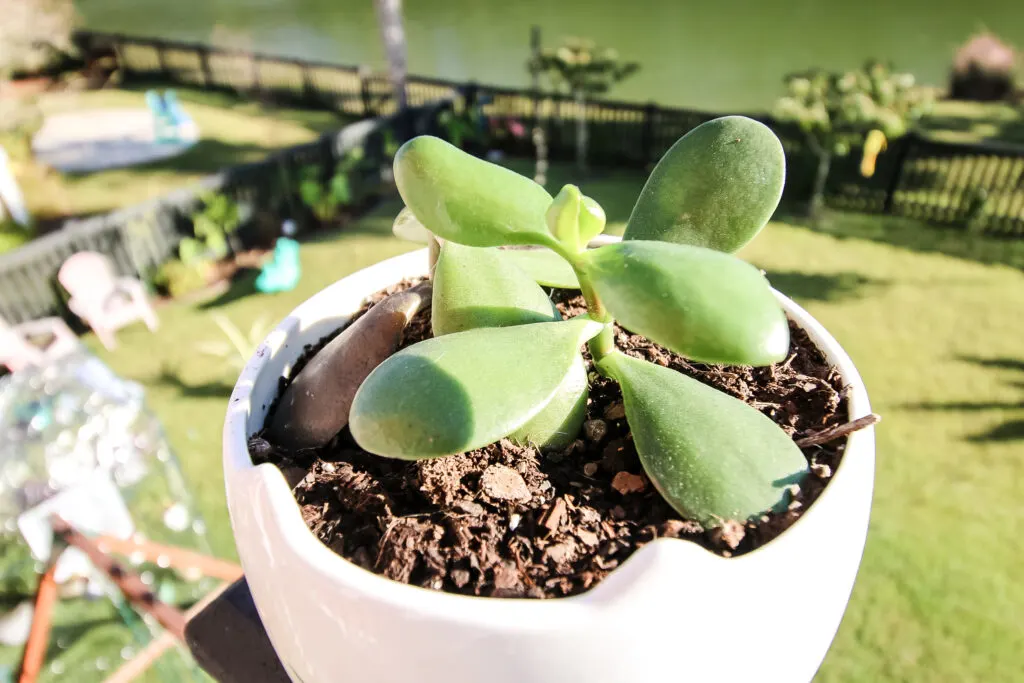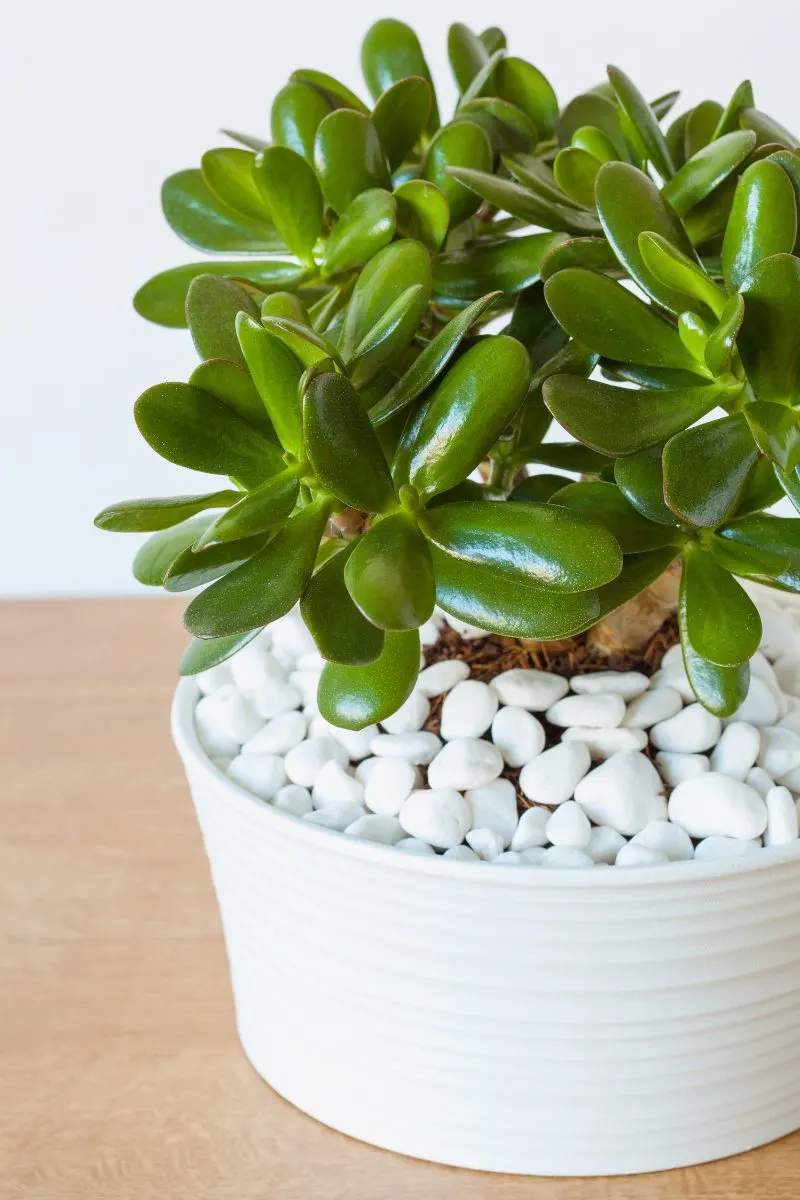Worried about jade plant wrinkled leaves? Learn the best jade plant care practices to rejuvenate and maintain your jade plant’s lush, healthy appearance!
The Jade plant, also known as “Crassula ovata”, is a popular houseplant known for its fleshy, vibrant leaves and resilient nature. But despite its sturdiness, Jade plants aren’t immune to problems.
One of the common issues you may encounter while growing these succulents is wrinkled leaves.
Jade plant wrinkled leaves can happen for a variety of reasons, but they’re typically caused by inadequate watering and related issues.
In today’s article, we’ll explore the top causes behind jade plant wrinkled leaves and how to fix them.

Why are my Jade Plant Leaves Wrinkly?
The top causes of wrinkled jade leaves are:
- Underwatering
- Overwatering
- Poor drainage
- Temperature issues
- Nutrient deficiency
- Old age
Let’s explore each of these issues.

1. Underwatering
As succulents, jade plants naturally store plenty of water in their leaves, which is one of the main reasons behind their plump look.
This is because the plant is originally native to the sandy slopes of Southern Africa, where water is scarce.
The leaves will retain their fleshy form as long as you keep the plant properly hydrated.
However, when the moisture reserves inside the leaves are depleted, the leaves will start to shrivel and wrinkle.
In that case, you need to test the soil to see how dry it is.
If the soil is completely dry, it’s time to water the plant generously, especially at the root level. The plant should regain its healthy form within a few days.

2. Overwatering
Next, let’s talk overwatering. Jade plants are much more sensitive to overwatering than underwatering.
When you water jade plant too frequently, the plant starts to suffocate and suffer from root rot.
The tricky part here is that shriveling will usually occur when the plant has been suffocating for quite some time, so it can be a bit challenging to save the plant at that point.
One indicator of this problem is that the soil will be quite damp, and the shriveling will be accompanied by a yellowish color.
The best way to save an overwatered jade plant is by digging its root bulk from the soil, removing the rotten parts, and repotting it in fresh, dry soil.
If there are enough healthy roots, the plant may survive.
Tip: To avoid watering problems, always test the soil moisture level before watering the plant. Ideally, you should water the plant when the soil is fully dry.
3. Poor Drainage
Is your Jade plant still looking overwatered, but you’re sure you’re not overdoing it?
If it still shows signs of overwatering, including root rot and damp soil, the pot might have drainage problems that cause the water to stagnate inside.
Check the bottom of the pot to make sure the drainage holes aren’t clogged, and use a coarse potting mix to allow good drainage.
If the plant’s struggling, just move it to fresh, dry soil, like we talked about earlier.

4. Extreme Temperature
When a Jade plant is put under high environmental stress, it can react by shriveling and wrinkling its stem and leaves.
This is more common if you set the plant near a cold air draft, such as air conditioning.
Extreme cold and windy environments will dry out the soil quicker, resulting in the stress effect.
To fix this problem, you just need to remove the plant from that spot and transfer it to another one with regular temperature and minimal air drafts.
But don’t try to warm it up too quickly – no heaters or direct sunlight, as sudden fluctuation is also very stressful for the plant.
5. Nutrient Deficiency
Like other plants, the Jade plant needs proper nutrition to ensure proper health and nourishment, especially during the growth phase in spring and summer.
While the plant doesn’t access proper nutrition, it’ll start using the food and water reserves it’s saving in its leaves to survive.
As the reserves inside the leaves and stem are depleted (especially calcium), the plant will look shriveled and wrinkled.
The simple solution for this problem is to provide the plant with proper fertilizer to replenish its reserves, and repeat every 3 to 4 months.
The ideal fertilizer for the Jade plant is a balanced 10-20-10 NPK fertilizer with extra supplementation with eggshells for calcium.

6. Aging
And lastly, aging. Unlike other reasons on the list, this one isn’t a problem but rather a part of the natural cycle of the plant.
As the Jade plant grows, older leaves will start to fall off to make room for new, healthier ones.
In some cases, those leaves will wrinkle and shrivel before they fall off.
You can tell that the leaf is wrinkling for natural causes because it’ll be surrounded by other healthy leaves.
All you need to do here is remove the wrinkled leaves from the plant to encourage the plant to redirect its resources to the new leaves.
Before you go…
There are various reasons why Jade plants may display wrinkled leaves.
The most common cause is water-related problems, such as underwatering and overwatering.
However, other factors like nutrient deficiency extreme temperature, and natural factors can also be the culprit here.
If you’re interested in finding out more about growing houseplants, check out this free printable guide, which walks you through all the necessary basics to get started!
Thanks for reading!


Hey there, I’m Morgan, a houseplant enthusiast from sunny Charleston, South Carolina. Growing up surrounded by my mom’s lush orchids and African violets, I discovered the magic of bringing nature indoors. Thanks to the pandemic, I delved deeper into houseplants, discovering their power to uplift moods and transform spaces. I’m here to spill all my secrets, helping you pick the perfect houseplant – and make it happy. Let’s keep your plants alive, together! 😊
